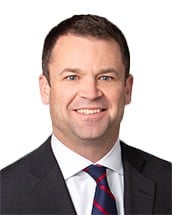In a new rule announced on January 23, 2024, the US Department of Commerce’s Bureau of Industry and Security (“BIS”) has (i) expanded the scope of the Russian and Belarusian Industry Sector Sanctions under the Export Administration Regulations (“EAR”); (ii) revised restrictions aimed at preventing Iran from supplying unmanned aerial vehicles (“UAVs”) (i.e., drones) to Russia; (iii) expanding the scope of items for which there is no de minimis level of certain US-origin items incorporated into non-US made items when destined for Russia or Belarus; and (iv) made various corrections and clarifications to existing export controls on Russia and Belarus.
Overall, these changes expand upon previous controls and bring the EAR into greater alignment with EU, UK, and other allied countries’ controls while also bringing more internal consistency to EAR controls related to Russia and Belarus.
Expansion of Russian and Belarusian Industry Sector Sanctions
The new rule adds 94 new Harmonized Tariff Schedule (“HTS”)-6 codes to the list of items subject to the Russian and Belarusian Industry Sector Sanctions in § 746.5(a)(1)(ii) of the EAR and listed in Supplement No. 4 to Part 746. These controls impose licensing requirements on certain EAR99 items destined to Russia or Belarus that ordinarily would not require a license for export, reexport, or in-country transfer to civilian end users there, with the aim of undermining Russian and Belarusian industrial capabilities.
Notably, BIS has added the following categories of items:
- All HTS-6 codes under HTS chapter 88 (aerospace, spacecraft, and parts related thereto);
- Certain types of mineral fuels (coal) and petroleum products (including petroleum jelly) under HTS chapter 27;
- Dozens of additional chemicals (including chemical elements such as arsenic, chlorine, hydrogen, nitrogen, and sodium) under HTS chapter 28;
- Certain types of vulcanized rubber under HTS chapter 40;
- Certain textile products for industrial use under HTS chapter 59;
- Gallium and other base metals under HTS chapter 81; and
- Certain tools under HTS chapter 82.
Revised restrictions on UAV-related items
In a further effort to prevent Iran, Russia, and Belarus from obtaining parts used in UAVs, BIS added HTS-6 code 852910 (antennas and antenna reflectors and parts thereof) to the list of items that require a license for export or reexport to Iran under EAR § 746.7 and to Russia and Belarus under § 746.8. Our blog posts on the February 2023 rule imposing these restrictions and the May 2023 rule revising the restrictions are available here and here.
Changes to the de minimis rule
The new rule also expands the scope of the de minimis rule to make non-US-made items automatically subject to the EAR when they incorporate the lowest-level military- and spacecraft-related items of US-origin (i.e., .y items from the 9×515 or “600 series”) when destined for Russia or Belarus. Previously, there was no de minimis level only when the destination country was China, Cuba, Iran, North Korea, or Syria.
Various corrections and clarifications to export controls on Russia and Belarus
BIS also introduced several corrections and clarifications to improve the internal consistency of different sections of EAR controls on exports, reexports, and in-country transfers to or within Russia and Belarus, the most notable of which include:
- Exclusion from license requirements for deployments by the Armed Forces of Ukraine to or within Crimea or the covered regions of Ukraine;
- Clarification that US-origin content controlled under Section 746.10 (the “luxury goods” controls) is excluded from the de minimis calculation when the non-US-made item will be exported from a country listed in Supplement No. 3 to Part 746;
- Clarification which section takes precedence for items identified in supplements no. 2, 4, or 5 to Part 746 that are also classified in an ECCN;
- Harmonization of which License Exceptions are available under various controls in EAR Part 746 related to Russia and Belarus;
- Clarification that items that meet the definition of “medicine” in the EAR are excluded from Supplement No. 6 controls; and
- Extension of the case-by-case license application review policy to applications related to safety of flight.


